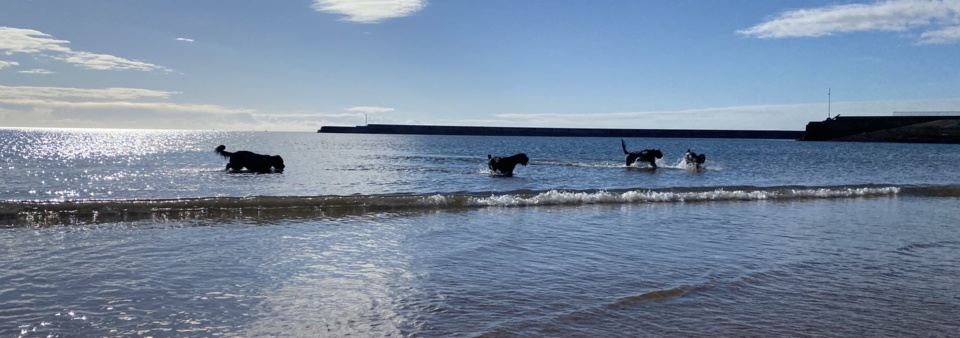
The 'Season'
The oestrus cycle can be divided into distinct phases known as pro-oestrus, oestrus, metoestrus, dioestrus and anoestrus each of which represent either behavioural or hormonal events.
The period that concerns most owners of unspayed bitches is from the start of pro-oestrus to the start of dioestrus; a period of approximately three weeks that generally occurs twice a year (less in some cases) when the bitch is described as being 'on heat' or 'in season'. At this time the bitch's behaviour and appearance change and she becomes the focus of male attention.
Where large groups of females congregate such as in kennels, rescue centres and urban parks, bitches tend to synchronise their cycles, so beware if you have an unneutered male dog as he will almost certainly want to follow the bitches' scent and be prone to disappearing while the sexual atmosphere is highly charged!
How to recognise the symptoms of a bitch coming 'on heat' or 'in season'
The first stage of the oestrus cycle is controlled by FSH (Follicle Stimulating Hormone) when the ovarian follicles mature in preparation for the release of eggs, the oestrogen levels increase and the uterus enlarges. When a bitch is coming 'into season' or 'on heat', you will primarily notice changes in her behaviour. She will become more excitable and flirtatious and she will leave little messages for her prospective suitors by frequently urinating when she is out and about. The vulva becomes more red-pink and swollen and slightly resembles a tulip. One can expect to see a bright red bloody discharge, which some bitches are better cleaning up than others. This is the pro-oestrus period when bitches are interesting to dogs and are putting out the right signals but they will not allow themselves to be mounted. This period continues for 9 days.
Increasing levels of oestrogen cause a surge of LH (Luteinizing Hormone) prior to ovulation. Ovulation generally takes place on day 10. This is when eggs are released from the ovaries. The vaginal discharge will become straw coloured and the vulva more enlarged. The bitch will become even more excitable and will allow herself to be mounted. Mating usually takes place between day 10 and day 14.
Metoestrus is the wind down period when the vulva shrinks back to its usual size, the discharge diminishes and dries up and the bitch's behaviour returns to normal. At this stage she still may attract male attention but she will not allow herself to be mated. Within the ovaries, the corpus luteum develops in the empty follicle (pocket) that remains after the egg has been released. This is a small glandular mass that excretes progesterone and prepares the lining of the uterus for pregnancy.
When everything appears to have settled down externally, there are still hormonal changes taking place internally. This stage is referred to as dioestrus when progesterone is still being released from the corpus luteum. In the non pregnant bitches the corpus luteum will regress and the uterus will be prepared for the next oestrus cycle. The stage after dioestrus is anoestrus, a period of 3 to 9 months before pro-oestrus restarts.
Dioestrus is the time that a small percentage of bitches suffer false pregnancy due to the high level of progesterone. False pregnancy tends to occur between 20 to 45 days after oestrus. Vets can treat this condition with hormones but if it continues to be a problem, neutering might be suggested.
